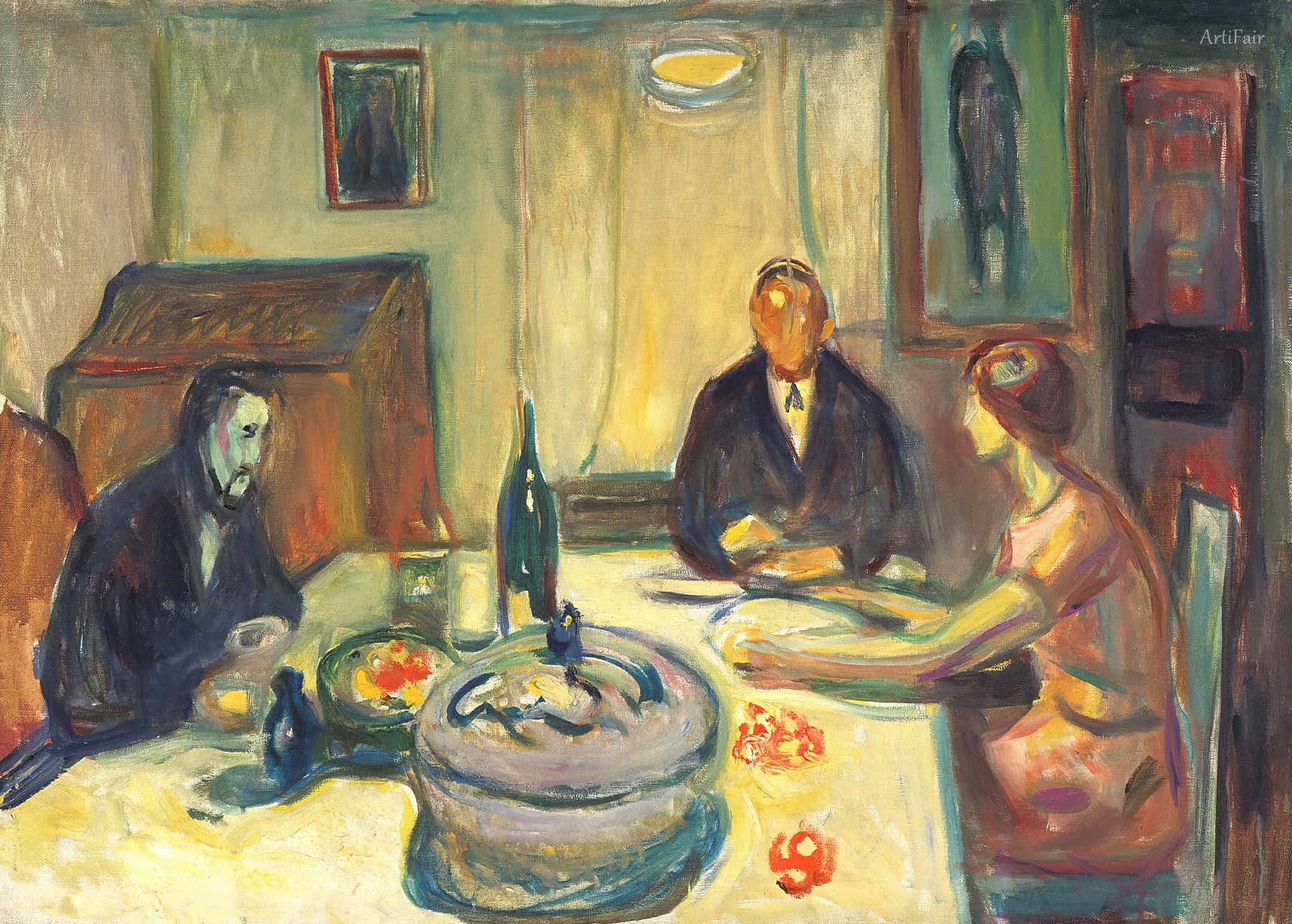
Art Appreciation
This captivating artwork immerses viewers in a scene filled with intriguing characters and rich emotion. The setting reveals an intimate gathering, likely among the artistic bohemians of Oslo, as suggested by the attire and postures of the figures. There’s a looming presence in the background, with dark walls contrasting the lighter tones of the foreground, creating a sense of depth and inviting the viewer to explore the layers of existence within the frame. The table, central to the composition, boasts an array of items, from a round fountain to vibrant fruits, symbolizing conviviality and abundance; yet, a tension resonates as the figures seem detached from one another.
The color palette is fundamentally warm, featuring vibrant oranges, reds, and yellows, which not only evoke warmth but also elicit a sense of nostalgia. Munch’s brushstrokes, dynamic yet deliberate, impart a fluidity that draws you into the scene, while the hazy expressions on the faces communicate a complex emotional landscape that speaks to solitude even amidst companionship. Historically, this piece encapsulates the 1920s, a period rife with cultural shifts and artistic exploration in Norway. Munch’s commitment to portraying human emotion coupled with social commentary speaks volumes of the bohemian spirit that was rising during this time—a time of liberation, creativity, and, frankly, turmoil. The painting stands as a significant tribute to Munch's ability to intertwine personal experience and broader societal themes through compelling visual language.